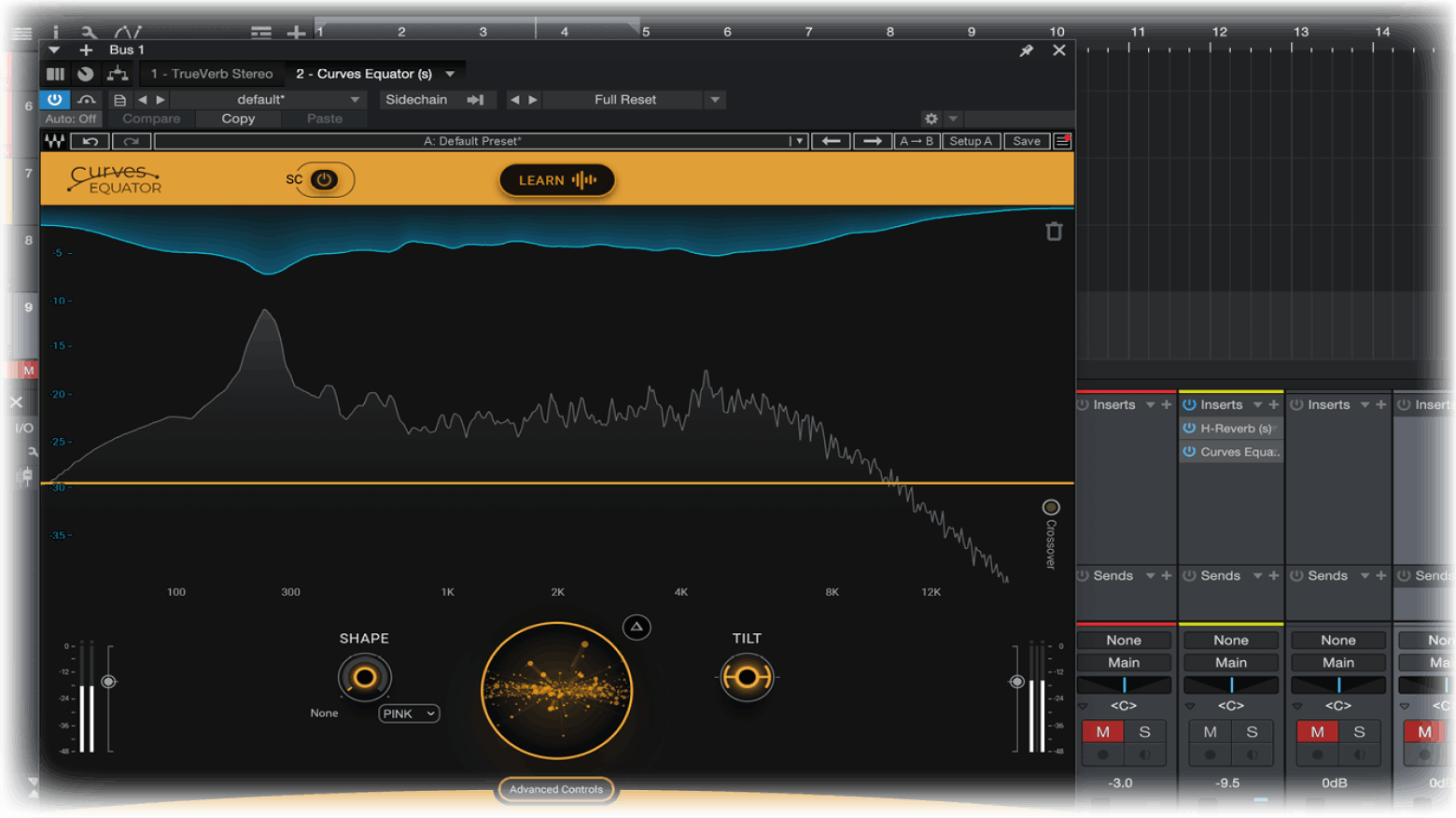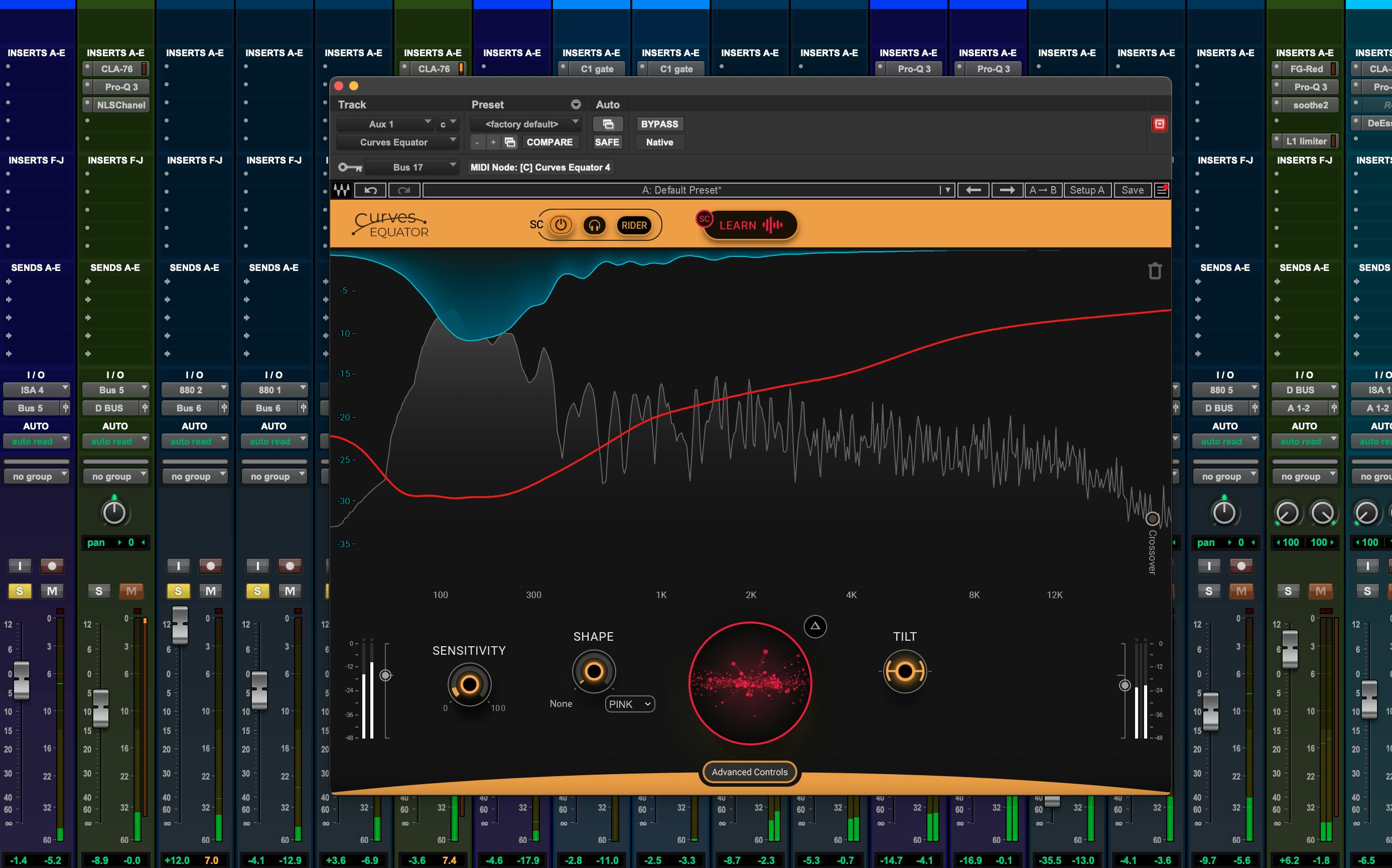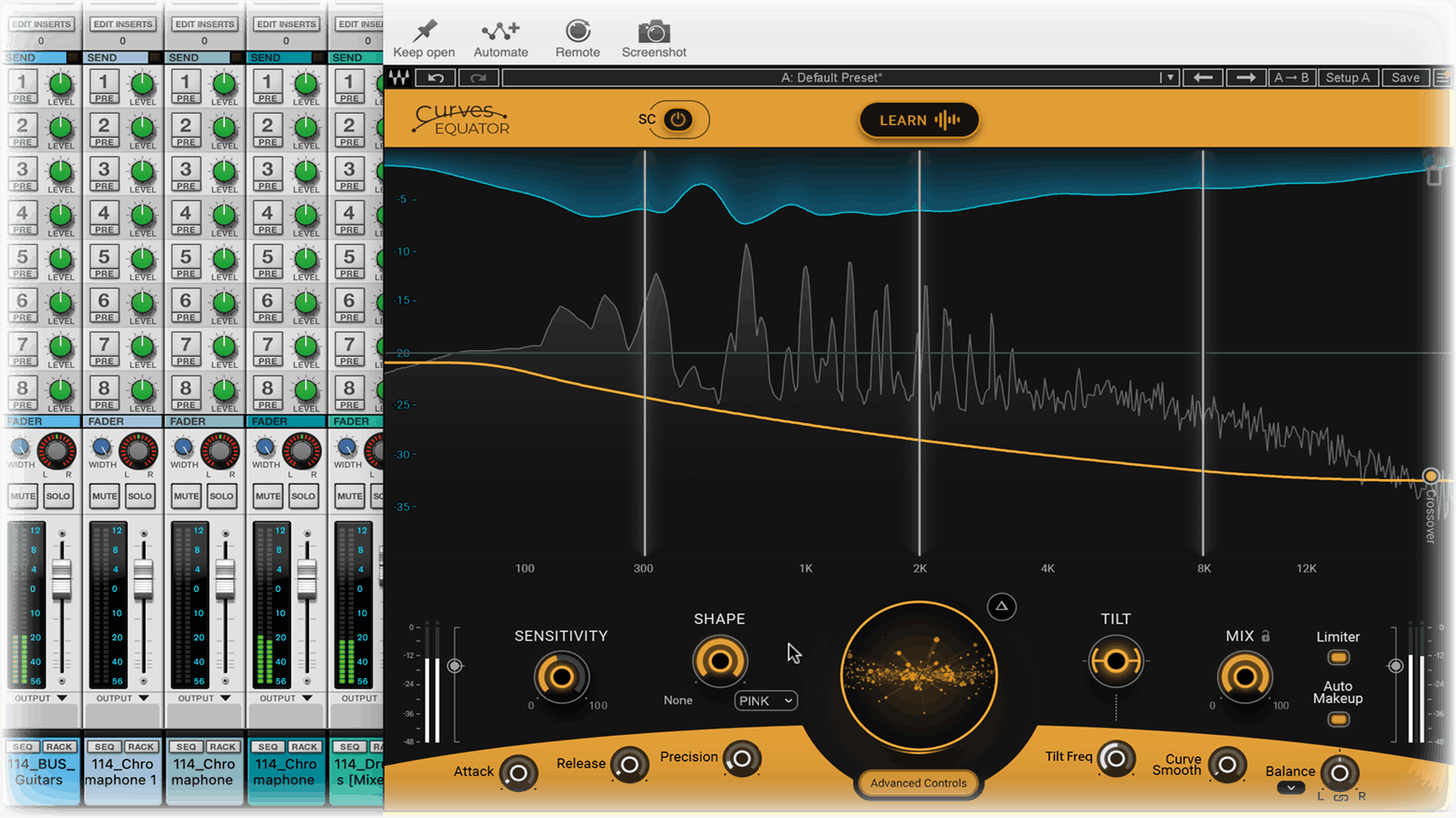7 Ways to Use Curves Equator and Get Better Control Over Your Mixes
From quick resonance suppression to unmasking and quick auto mixing – here are the reasons you need to sit up and listen to what Curves Equator can do for your music.

Curves Equator is the go-to signal soother you never realized you needed – until you heard the results. With its resonance-suppression technology and ease of operation, this new plugin will have individual instruments, busses and full mixes sounding like the best version of themselves in no time, taming harshness, unwanted peaks and rough edges.
We’ve pushed Curves Equator further than any other resonance suppressor that came before, with its unique signal learning ability, Tilt control and other reference curves meaning that you’re not just referencing to a flat line like in other plugins, and with the added benefit of extra detection and dynamics controls to advanced applications.
Wondering what Curves Equator will let you do, and how it can change your music production workflow? Read on and we’ll tell you exactly how.
Suppress Resonances Quickly and Easily
The main remit of Curves Equator is its ability to drive out harsh resonances from a sound incredibly quickly. Once the plugin is loaded on a channel, bring down the large yellow control in the bottom center to flatten the frequency response of the sound. The more you bring the line down, the flatter the audio becomes, as demonstrated by the gain reduction in blue from the top.

Curves Equator can be added to multiple tracks. Here’s a music project with minimal mixing applied. Hear how it sounds quite muddy as it stands.
- 0:00 /
- Muddy Mix
By adding Curves Equator to every main element of the project, and increasing its processing, the parts immediately become tighter and more under control, gelling together better right from the start.
- 0:00 /
- Mix fixed with Curves Equator on main elements
Curves Equator is also great for traditional resonance suppressing jobs that would have previously taken some time to pull off using an EQ.
Taking The Edge Off a Snare
A classic use case for tight, surgical EQ curves is in a ringing snare. Now, with Curves Equator, there’s no need to calibrate and place multiple notches in strategic locations by ear. Instead, the plugin will automatically bring the strong resonances down when processing is activated, as heard below on this snare before and after.
- 0:00 /
- Ringing in close-mic snare track
- Ringing gone with Equator
Downplaying Messy Cymbals in Overheads
Some signals are beyond the scope of notching EQ. Harsh-sounding, wide-band sounds like overcooked cymbals benefit from a broader approach – and this can be done quickly and easily using a wideband resonance suppressor like Curves Equator.
In the below example with Curves Equator activated, our settings are a Pink Noise curve shape, with high values of Sensitivity and Precision.
- 0:00 /
- Splashy room mic channel
- Less harsh feeling room channel using Equator
Custom Curves – Learning Your Material
By default, resonance suppression in Curves Equator is all about bringing a sound’s frequencies more towards a straight line – IE, an equal amplitude at all frequencies. In Curves Equator, click Learn and start playback, and the plugin will analyze the frequency content of the sound as it was to begin with, defining a new curve. Now, it will be this curve that is used to drive the resonance suppression.
Why Curves Equator is Different From Other Resonance Suppressors
Other resonance suppression plugins reference their gain changes to a flat line, moving sounds towards a state where all frequencies are equally strong.
With Curves Equator and its Learn function, you can take account of a channel’s character before resonance suppression. This means that the more you increase processing, the more that channel will sound like itself – not like a flat line of white noise.
Unmasking Another Channel Using the Sidechain Filter
By combining Curves Equator’s Learn function with sidechain functionality, this resonance suppression plugin becomes an unmasking plugin. In our audio example, we introduce a bass guitar which competes heavily with a stereo acoustic guitar. Hear the problem in the audio example below.
- 0:00 /
- Mixing bass and acoustic guitars BEFORE
If we put Curves Equator over the acoustic guitar, activate the sidechain (SC) input mode and select the bass guitar channel as the sidechain input to the plugin (achieved in your DAW), then we can tell the Equator on the acoustic guitar channel what to suppress more: the exact energy that’s present on the bass channel.

By doing this, our instance of Curves Equator will suppress the frequencies from the bass guitar for the acoustic guitar, which can be further tweaked using the Advanced Controls. As you can hear below, the end results enable the acoustic guitar to sit much better alongside the bass track.
- 0:00 /
- Mixing bass and acoustic guitars AFTER
Increasing Spectral Balance on The Master Channel
One key property of a great commercial mix is in its frequency balance. As a rule of thumb, the idea is that a track’s general balance of frequencies should be distributed in a smooth curve that resembles the slope of pink noise: strong in the sub bass and bass frequencies then reducing steadily with an increase of frequency. We might call this a good tonal balance or spectral balance.
Don’t get us wrong – this isn’t a sacred law, and there are plenty of tracks that buck this trend, but this pink-noise-style spectral balance is something that professional mastering engineers had arrived at before visualizing frequency profiles on a graph was commonplace.

Using Curves Equator’s Shape turned all the way to the Pink Noise profile will get you to the perfect destination for this rule-of-thumb spectral balance result. For mastering applications, Sensitivity and Precision should be used wisely to balance the track but not in a surgical way. Remember, mastering isn’t a visual pursuit, and fitting a frequency profile into a specific target isn’t the goal – the sound is always the most important thing.
Try Using Curves Equator as a Critical Listening Aid
Thanks to the Delta function on the plugin (the triangular button next to the main control), Curves Equator can also function to highlight the parts of a track that stick out or sound harsh.
Originally added to compare the processed and unprocessed signal, Curves Equator’s Delta function flips its output, making audible only what the plugin removes from the signal.

The Delta function can actually be a great teacher for your ears. When you use Curves Equator, occasionally flick on this function to hear what the plugin has detected as harshness and unwanted resonances (in accordance with the target profile you’ve set), and you’ll start to train your ears to define, perceive and seek out similar hars peaks in future.







